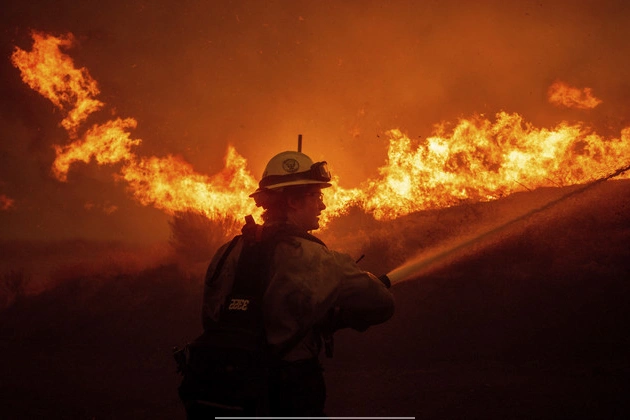
In response to the escalating threat of wildfires, California cities are reevaluating their priorities when it comes to allocating resources. While traditionally crime prevention has been a central focus, the recent surge in devastating wildfires has prompted city and county governments to redirect attention and funding towards bolstering their firefighting capabilities.
The Shift in Priorities
For years, California’s law enforcement agencies have emphasized the need for additional resources to combat crime. However, the visible impact of underfunded and understaffed fire departments grappling with catastrophic fires has spurred a new wave of initiatives aimed at fortifying firefighting infrastructure.
With a growing consensus among the public regarding the severity of the wildfire threat, many municipalities are exploring novel approaches to secure funding. Proposed measures include new taxes and borrowing schemes designed to enhance the firefighting capacity of local fire departments.
Rising Concern Over Wildfire Risk
Over the past decade, the specter of wildfires has transitioned from being predominantly a rural concern to a pressing issue affecting urban and coastal regions of California. Recent surveys indicate that nearly 80% of Californians now view wildfires as a significant problem, underscoring the urgent need for proactive measures.
Cities like Los Angeles are proactively addressing the wildfire risk by proposing initiatives such as bonds to finance the construction and renovation of fire stations. Similarly, smaller communities like Dos Palos are seeking voter approval for new taxes to prevent fire station closures, highlighting the widespread recognition of the importance of firefighting capabilities.
Challenges and Solutions
Despite the growing consensus on the critical nature of wildfire prevention, fire chiefs face challenges in securing adequate funding amidst competing priorities. The aftermath of the pandemic has further strained resources, necessitating transparent and persuasive campaigns to rally public support for increased funding.
The historical underfunding of fire services, compounded by factors like Proposition 13 and economic downturns, has created a scenario where fire departments are grappling with staffing shortages and outdated infrastructure. The need for sustainable funding mechanisms to address these systemic issues has never been more apparent.
As cities like Oakland confront budget deficits and potential fire station closures, the imperative to prioritize fire safety over other municipal services is becoming increasingly pronounced. The interconnectedness of housing, social services, and public safety underscores the complexity of the funding landscape.
Looking Ahead
As California cities navigate the delicate balance between fiscal responsibility and public safety, the discourse around funding allocation is expected to intensify. Proposals for new taxes and bonds aimed at bolstering firefighting capabilities signal a shift towards proactive risk mitigation strategies.
With the specter of wildfires looming large, city officials are tasked with charting a sustainable path forward that ensures adequate resources for fire prevention and response. The urgency of the situation demands decisive action and a collaborative approach to safeguarding communities against the growing wildfire threat.















